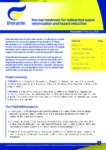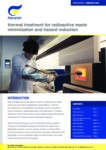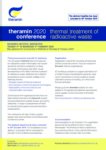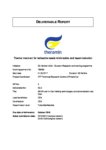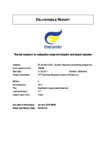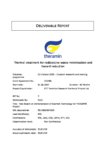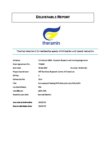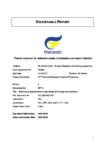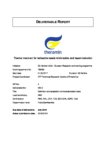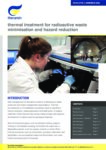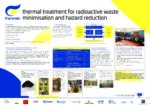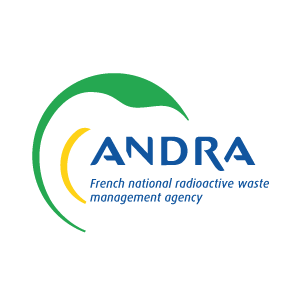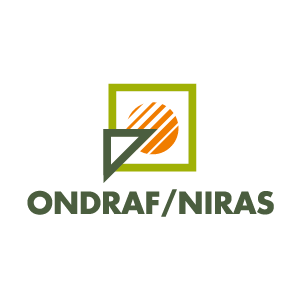THERAMIN: Thermal treatment for radioactive waste minimisation and reduction
Thermal treatment can provide significant volume reduction, waste passivation and organics destruction for radioactive wastes, with benefits for waste storage and safety cases for geological disposal. The THERAMIN project aimed to provide improved understanding and optimisation of the application of thermal treatment to wastes. THERAMIN successfully demonstrated six technologies (SHIVA, In-Can Melter, GeoMelt®, thermal gasification, vitrification and hot isostatic pressing) with a range of waste groups, improved understanding of treated products and provided a better strategic understanding of relevant wastes and technologies.
Overview
Project Dates: 1/06/2017 – 31/05/2020
Project Status: Finished
Project Website: www.theramin-h2020.eu
The THErmal treatment for RAdioactive waste MINimisation and reduction (THERAMIN) project was focused on improving understanding and optimising the application of thermal treatment to wastes.
Safe management of radioactive waste is challenging to waste producers and waste management organisations. Deployment of thermal treatment in an optimised waste management life-cycle can provide significant volume reduction, waste passivation and organics destruction, with benefits for waste storage and safety cases for geological disposal. Relevant technologies include in-container vitrification, gasification, plasma treatment and hot isostatic pressing.
THERAMIN explored and demonstrated a number of treatment technologies and provided assessments of the technologies, relevant waste streams and the disposability of the treatment products. The results can help to optimise the waste management life-cycle for treatable wastes.
THERAMIN was a collaborative project funded by the European Commission under the Horizon 2020 Framework. The project was implemented by a consortium with 12 project partners and was advised by an End User Group (EUG), consisting of waste management organisations and waste producers from five countries (Belgium, Finland, France, Switzerland and the UK).
Objective
THERAMIN undertook an EU-wide strategic review and assessment of the value of thermal technologies applicable to a broad range of waste streams (ion exchange media, soft operational wastes, sludge, organics and liquids). THERAMIN compiled an EU-wide database of thermally treatable wastes, documented the strategic benefits of thermal treatment, and identified the opportunities, synergies, challenges, timescales and cost implications. THERAMIN also aimed to evaluate the effectiveness and achievable volume reduction of thermal treatment technologies through ‘first-of-a-kind’ active and non-active full-scale demonstration tests and to assess the disposability of residues.
The project benefited from the large investments made by partners in thermal treatment R&D facilities, which were used in THERAMIN to maximise the benefit across Member states. THERAMIN also benefited from close engagement with an End User Group composed of waste producers and waste management organisations. Strategic goals included establishing a pan-European network of expertise on thermal treatment, to provide for cross-European technology transfer, and to identify prospects for sharing of facilities between countries facing similar problems. In addition, THERAMIN aimed to encourage the mobility and training of staff for the development of the next generation of engineers and scientists, and the proposal included a technical training workshop, a scientific conference, and use of other dissemination tools.
Results
The THERAMIN project successfully complied a summary-level inventory of European radioactive wastes suitable for thermal treatment and a undertook review of available thermal treatment technologies. This supported the rest of the project and provided a clear basis for decision-making for members of the End User Group.
A value assessment methodology was also developed that can be used to identify the benefits and challenges of thermal treatment compared to the baseline options, which can be used to inform strategic consideration of thermal treatment for waste groups studied within the project.
The project successfully demonstrated the applicability of six different thermal treatment technologies (SHIVA, In-Can Melter, GeoMelt®, thermal gasification, vitrification and hot isostatic pressing) for a range of waste groups representative of those identified in participating countries. The thermally treated products of these and other trials were also characterised, and these data were used to undertake preliminary disposability assessments. Characterisation demonstrated that the removal of volatile components, organic complexants and water, which has benefits in terms of reducing the potential for gas generation, corrosion of storage and disposal containers, and radionuclide transport rates within the disposal facility.



